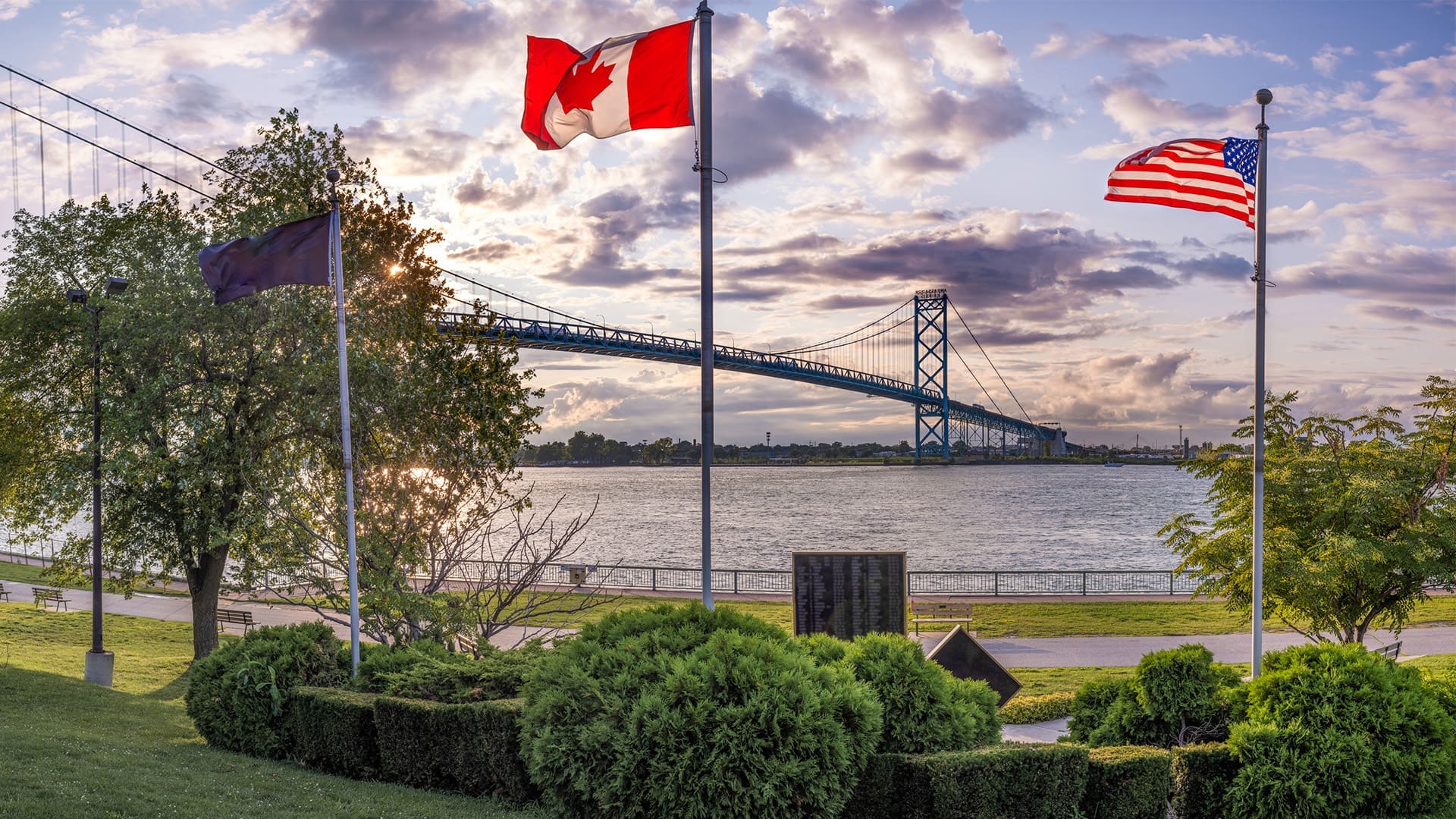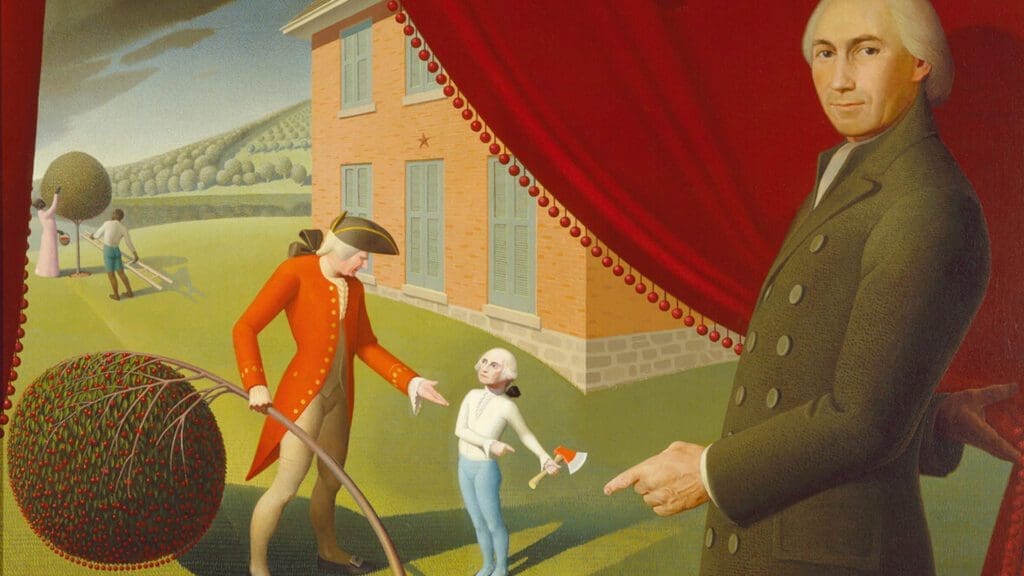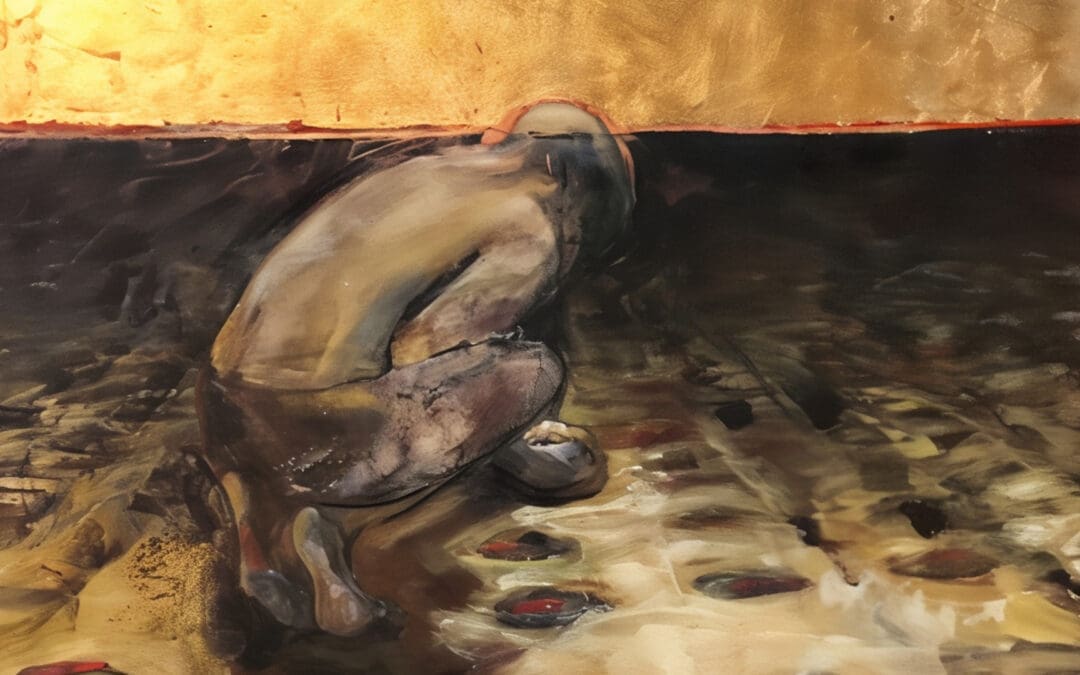W
When Harry Truman ordered the atomic bombing of Hiroshima and Nagasaki on those fateful August days in 1945, the bombs that fell contained Canadian uranium. I struggle to arrive at a more powerful metaphor for the American-Canadian relationship as it has come into maturity since World War II. Those bombs, which brought a final and terrifying end to the war, speak not only of shared industry and security but also of a morality that is geographically and narratively conjoined. Even in the complaints and grandstanding of separateness, we read of a relationship, a bond.
Americans are now privileged, thanks to President Trump, to rediscover the nature of this bond, in a way Canadians never forgot because their productivity, their power, their successes have never entirely been their own. Canadian history has unfolded on the edges of great empires: whether the British or French, from whom Canada takes its origin, or the American, which midwifed and then husbanded the new Anglo-Atlantic postwar order. That Americans forget the nature of this bond is not, as Canadians tend to complain, a special American obliviousness to the world or indifference to anything outside their borders. It is a simple fact of scale in geopolitics and economics.
There is no special shame in being a smaller or weaker nation. Were Canada in any other part of the world, it might not feel this underlying resentment at all. But Canada sits atop—quite literally an implausible Arctic squatter—the greatest superpower the world has ever known. Taking an Arctic view, as many now do, Canada spent much of the Cold War actually sandwiched between the two great rival superpowers, only the increasingly hospitable Arctic dividing them. Canada is a middle-power state stretched across a superpower geography.
Why, then, should Canada not be a state in that greater American union?
President Trump is surely right that he could bully us into submission on nearly any issue that came to his mind: border security, fentanyl, defence spending, supply management, banking protectionism . . . The list of American complaints could go on, and any one of these complaints could be wrested away from Canada by even the mere threat of American economic—to say nothing of military—power. Nostalgia for Mitchel Sharp’s now long forgotten “third option” in the 1970s, that Canada could hedge its American dependence by finding other rival trading blocks and allies, is geographical fiction. As Shannon O’Neil conclusively demonstrates in The Globalization Myth: trade is regional, not especially global. It is Canada’s good, and albeit sometimes bad, fortune to be planted in the soil of the North American trading block. We aren’t going anywhere else. And neither is our trade.
So, where did we go wrong? How did we get here?
Neighbo(u)rs, Partners, Friends
Tim Cook, Canada’s celebrated national historian and director of the Canadian War Museum in Ottawa, offers us a great place to start in answering these questions. His new book, The Good Allies, tells the story of how neighbours became partners became friends. Cook argues that the true origin of this friendship is not 1775 or 1867 but 1941. What began as a tale of American anxiety over its already-economic integration with Canada—a then-belligerent—in World War II, and America’s special concern over hemispheric security after December 1941, ends with a major combined effort at global war.
While British North America—that is, what would become Canada—resisted some minor invasions in 1775 and 1812, with a few more half-hearted attempts in the 1830s and 1840s, by the time of Canadian Confederation in 1867 the story of direct confrontation was over. It is true the United States harboured dreams of Manifest Destiny, and probably also felt some passive annoyance at the great bulk of what Canada called “loyalists” (and America called traitors) settling in after the Revolution. But by and large this nine-thousand-kilometre border, which at many points would be hard to find without considerable orienteering, was generously accommodated. For good reason: Plenty of trade crossed those porous borders, and communities, cultures, languages, and religions were all similar enough to establish congenial relations. The border regions were settled less as an exercise in high-rolling diplomatic summits and more pragmatically as an exercise in proximate neighbourliness.
It is often forgotten that prior to the American entry in World War II in December 1941 the Canadian and American supply chains were already integrated enough that some lawmakers in Washington were anxious about the appearance of direct support. President Roosevelt’s war policies would expose America further still, a mirror image of the escalations that led to American entry in World War I. While Canadians laboured to shore up hemispheric defence to a degree that satisfied the Americans, especially after Pearl Harbor, the safe harbours of Newfoundland (not a province until 1949) and the tactics of U-boat warfare saw a great deal of collaboration even prior to the Japanese surprise attacks. When the bulk of the American navy pivoted to the Pacific after 1941, Royal Canadian Navy ships took a great deal of front-line duty both escorting and training the newly arrived Americans into U-boat warfare. Operation Paulenschlag (drumroll) saw dozens of U-boats off the coast of Newfoundland, sinking critical Commonwealth tonnage, but the true damage was done on the soft underbelly of the American East Coast. On January 14, 1942, U-123 surfaced in New York City’s Lower Bay. The Germans labelled this the Second Happy Time, or more candidly, the American Shooting Season. As American naval security hardened in the Atlantic, U-boats slipped south into the Caribbean. German Admiral Karl Dönitz, commander of the U-boats, declared, “By attacking the supply traffic—particularly the oil—in the US zone, I am striking at the root of the evil.”
The political economy of World War II was not American or Canadian, but North American.
Canadians would come to fight in both oceans, in Italy, on the beaches of Normandy, through Europe, even in the Pacific, and on the strange Aleutian Island campaign, off the tip of Alaska. Canada was the fourth-largest Allied producer, manufacturing $9 billion worth of material, though with a supply chain deeply integrated with the United States. President Roosevelt called Canada the “aerodrome of democracy,” a recognition of its fundamental contributions in men, material, and training for Allied air forces. Canada extracted and forged mountains of resources. The statistics Cook marshals are truly mind-boggling: 3,499,746,000 pounds of copper, 2.5 billion pounds of lead, 1.6 billion pounds of nickel, 10.02 billion short tons of pig iron, 27.9 billion board feet of lumber, and 106.5 billion short tons of coal. Half of the world supply of asbestos came from Canada, and over 90 percent of the nickel used by the Allies (excluding the USSR) was dug in the Dominion. Canada produced 3,674,284,000 pounds of its single most strategic asset—aluminum—over a third of it going to the United States. Allied armies benefited from being more broadly mechanized than the Axis powers, with 815,729 trucks coming from Canada alone, as well as 50,000 armoured vehicles, tanks, and self-propelled guns. Canada manufactured 800 naval and cargo vessels, 16,400 aircraft, 1.5 million firearms, and over 4.6 billion rounds of ammunition.
But the genius of its wartime production was not simply its integrated supply chain, its “ability to complement the US’s output—and feed it with vast sums of raw material.” As Kenneth Wilson put it in Macleans, “it is realized with some astonishment that so far as the war effort is concerned the forty-ninth parallel has virtually disappeared.” The political economy of World War II was not American or Canadian, but North American.
Yet after the war, when reconstruction money from the United States began to flood the devastated Eurozone, Canada refused participation in Marshall Plan funding, or reconstruction aid generally. In truth, Canadians had not suffered the deprivations and desolations of their European counterparts, but as a nation it was also making a point: we have fought, we have suffered, and we are still whole. Canada, as Mackenzie King would put it, was now a true world power.
When Elephants Fight, the Grass Suffers
Canadians could be forgiven for not feeling that way of late. The causal degradation and public humiliation of the country has the feel, rather, of a bygone era of great power politics. President Trump is undoubtedly reshaping the postwar order, and perhaps, as Cook suggests, that includes, even surprisingly begins with, the order established right here at home, in North America. If postwar international settlements were a bad deal for America, surely one of the biggest of those settlements would be the integrated continental relationship between Canada and the United States.
Canada may also suffer too much nostalgia, too many indulgences from its own glorious age of great power accession, captured memorably in Andrew Cohen’s While Canada Slept. In security, in international reputation, in defence investments, and in hard-power trade-offs, Canada has rested too much on its laurels, persisting too long in the post–Cold War moment of peace brought on by American unipolarity. One could rightly say that what has changed is that the enviable Canadian achievements in international order and security at the origin of the Canadian-American friendship have fallen into disrepair, that even Canada’s most basic 2-percent-GDP NATO spending commitment has become a bridge too far.
Lord Palmerston famously observed that Britain has no permanent friends, only permanent interests. Cook argues that it is much to the credit of Canada and the United States that they have maintained a permanent friendship—notwithstanding disagreements—and have worked to serve permanent interests in the Northern Hemisphere. The war forced Canadians, Cook says, to grow up, be good allies, and discover what it meant to be North American.
Canada has come late to the realization that the post–Cold War peace dividend is now well and truly spent. We are among the last to realize this, I think, because of the privileges that were won by our forebears on those same battlefields at Dieppe, at Juno, and at sea. We are among the last because our friends the Americans have watched with more vigilance than us a world turning hostile to the views and virtues of Canadians, ones that—in truth—vary only at the margins from those of Americans. Our geography has made us complacent, our history has made us presumptuous, our privileged friendships have made us free riders. But none of this is insurmountable, and none of it cannot be overcome through attention and industry toward the new world in which we find ourselves. It is not the world Canada would have made. It is not the world Canadians wanted when they voted for Justin Trudeau’s sunny ways in 2015, over Stephen Harper’s sober conservatism. Alas, in history, world events get a vote, and voting against what Harper saw clearly in Russia’s annexation of Crimea in 2014 would come to be a loss of geopolitical insight for which the country would suffer. We now enter into a world in which Canada is neither safe nor secure.
But as a new world order is renegotiated, we could do worse than look to the way we negotiated our place in the last one. We cannot match the superpowers dollar for dollar in a contest of will, and we cannot move our country or pivot our region. Our leadership should not virtue-signal for domestic audiences about “hitting back” in a fight that will crush us. Nobody is coming to rescue us.
Our geography has made us complacent, our history has made us presumptuous, our privileged friendships have made us free riders.
But we can rediscover what it means to be a good ally, both at home and now increasingly abroad. When in the 1990s Canada last had to dig out of economic sclerosis and crippling fiscal deficits, we had the benefit of doing it on the back of deep cuts to defence. We had the benefit of a new treaty—NAFTA—with the United States of America, to drive growth. Now we have arrived at a moment when economic crisis meets geopolitical crisis and what Kim Richard Nossal describes as “pinchpenny diplomacy” is not an option. We need an answer for the casual condescension of US Secretary of State Dean Rusk, who said of the British in the that they preferred free aspirin and false teeth to Britain’s role in the world. If we do too, we might lose even that.
One way might be focusing on hemispheric defence again, which is the origin of Canada’s partnership with America, as Cook tells it. Front-end procurements of Norwegian/German electric-diesel submarines could make a dent in Canada’s Arctic sovereignty, an effort the Harper government was beginning just as it lost power. Icebreakers are non-negotiable. Procurement strategy must be rebuilt around new geopolitical urgencies, focused on deployable hardware rather than on regional economic growth, as it has been. Another idea might be to join the Europeans in a major investment in Ukrainian material power. A world in which a middle-power European state like Ukraine is allowed to break under Russian aggression is a world in which Canadian sovereignty, in the Arctic, where it borders that same state, and elsewhere, will be under considerable stress. Let Canadians appreciate the irony for the Trump administration of meeting and exceeding our NATO commitments by supporting to a dramatic degree the cause of Ukrainian independence.
President Trump is not Canada’s friend. But he is a wakeup call to Canadians about the new world into which we have come, a world of belligerent great powers, of rising nationalism, and unapologetic aggression. Canadians must also, however, remember that the president’s rhetorical shock and awe to off-balance his adversaries is still just that: his strategy. We need not and must not overindulge our nascent anti-Americanism. President Trump wants you to believe he exhausts American identity, but he does not. We know. We live here.
For all our talk of how existential Trump’s proposed tariffs are to Canada’s struggling economy, the truly existential rivalries with rising illiberal regimes may be still to come. The Americans have been and are our best friends, even if this particular American is not. I do not pretend President Trump has done Canada, in tone or substance, any favours. But in rousing Canadians from our post–Cold War fever dream he may, at least, have gotten our attention to stand—again—on guard.





